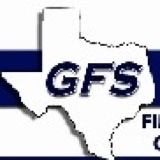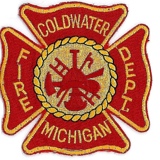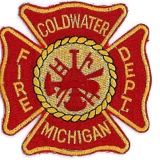Information
-
Document No.
-
Company's Name
-
Company's Address (Street/Suite#/City/State/Zip)
-
Conducted on
-
Prepared by
-
Location
-
Personnel
1.General
Information
-
GFS Texas Order Number:
-
Date and Time
-
Report To:
-
Site Inspection's Address (Street/Suite/City/State/Zip)
-
Has the Building Owner be notified?
-
Has Fire Marshall been Notified?
-
Has the building's Security/Maintenance been notified of fire suppression system testing?
General Section (A)
-
All General question to be answered by the Owner, Owner's Representative, if Owner is not present during Inspection leave question blank
-
Is building occupied?
-
Have there been any changes in the occupancy classification or operation since last inspection?
-
Have there been any changes or repairs to the fire protection system since last inspection?
-
Has a fire occurred since last inspection?
-
Have damaged sprinkler components been replaced?
-
Are gravity, surface or pressure tanks protected from freezing?
-
Are the buildings areas protected by a wet system, heated, including the blind attic and perimeter areas, where accessible?
-
Have there been any irregularities in pump operation during weekly/monthly test? (If applicable)
-
Are any of the sprinkler heads 50 years old or older?
1. General Section (B)
-
To be answered by inspector
-
Have the sprinkler systems been extended to all visible areas of the building?
-
Does there appear to be proper clearance between the top of all storage and the sprinkler deflector?
-
Are all visible exterior opening protected against the entrance of cold air?
-
Have all fire pumps been tested to their full capacity through the use of hose streams or flow meter within the past 12 months?
2.Control Valves
2.Control Valves
-
Are all sprinkler system control valves and all other valves in the appropriate open or closed position?
-
Are all control valves sealed or supervised in the open position?
-
City connection
Sectional Supply
-
Title of city connections
-
Type of valve
-
Is valve "Easily Accessible"?
-
Are signs visible and legible?
-
Is the valve open?
-
Is the valve secured
-
How is it secured?
-
Is the tamper operational
-
Fire pump assembly
fire pump assembly
-
Title of fire pump
-
Photos of Fire Pump
-
Inlet valve
inlet valve
-
Type of valve
-
Is valve "Easily Accessible"?
-
Are signs visible and legible?
-
Is the valve open?
-
Is the valve secured
-
How is it secured?
-
Is the tamper operational
-
Flow Meter bypass valve
Flow Meter bypass
-
Type of valve
-
Is valve "Easily Accessible"?
-
Are signs visible and legible?
-
Is the valve open?
-
Is the valve secured
-
How is it secured?
-
Is the tamper operational
-
Test Header
Test Header
-
Type of valve
-
Is valve "Easily Accessible"?
-
Are signs visible and legible?
-
Is the valve open?
-
Is the valve secured
-
How is it secured?
-
Is the tamper operational
Discharge valve
-
Type of valve
-
Is valve "Easily Accessible"?
-
Are signs visible and legible?
-
Is the valve open?
-
Is the valve secured
-
How is it secured?
-
Is the tamper operational
Bypass valve
-
Type of valve
-
Is valve "Easily Accessible"?
-
Are signs visible and legible?
-
Is the valve open?
-
Is the valve secured
-
How is it secured?
-
Is the tamper operational
Sectional Supply
-
Title of sectional supply
-
Type of valve
-
Is valve "Easily Accessible"?
-
Are signs visible and legible?
-
Is the valve open?
-
Is the valve secured
-
How is it secured?
-
Is the tamper operational
-
Sectional Interior
Sectional Interior
-
Title of sectional supply
-
Type of valve
-
Is valve "Easily Accessible"?
-
Are signs visible and legible?
-
Is the valve open?
-
Is the valve secured
-
How is it secured?
-
Is the tamper operational
System Riser
-
Title of system Riser
-
Type of valve
-
Is valve "Easily Accessible"?
-
Are signs visible and legible?
-
Is the valve open?
-
Is the valve secured
-
How is it secured?
-
Is the tamper operational
-
Photos of Riser
Alarm Line
-
Title of alarm line
-
Type of valve
-
Is valve "Easily Accessible"?
-
Are signs visible and legible?
-
Is the valve open?
-
Is the valve secured
-
How is it secured?
-
Is the tamper operational
Backflow
-
Title of Backflow
-
Type of valve
-
Is valve "Easily Accessible"?
-
Are signs visible and legible?
-
Is the valve open?
-
Is the valve secured
-
How is it secured?
-
Is the tamper operational
-
Photos of Backflow
3.Water Supplies
3. Water Supplies
-
What type of water supply
-
Other Type
-
What is the (psi)?
-
Test pipe
test pipe
-
What is the test pipe location?
-
what is the test pipe size? (inches)
-
Static pressure before (psi)
-
Flow pressure (psi)
-
Statice pressure after (psi)
4.Tanks,Pump,FDC
4.Tanks, Pumps, Fire Department Connections
-
Do fire pumps,gravity,surface or pressure tanks appear to be in good external condition?
-
Are gravity surface and pressure tanks at the proper pressure and/or water level?
-
Are fire department connections is satisfactory condition, couplings free, caps/plugs in place, check valves tight?
-
Are fire department connections visible and accessible?
Stairwell
-
Title of Stairwell
Floor
-
Which Level
Tamper
-
Enter Time
-
What color is the Tag
-
Deficiencies Notes
-
Photo of Tamper
5. Wet System
5.Wet Systems
-
Total number of wet systems
-
Wet system
wet system
-
Photos of Riser
-
Valve Make
-
Valve Model
-
Valve Size
-
Valve Year
-
What color tag is on the wet system?
-
(If a Yellow or Red tag is select) What is the deficiency?
-
Have antifreeze solutions been tested?
-
Were the antifreeze test results satisfactory
-
Test Results
Select Type of Inspection
-
Any "No" answer, test failures or other problems found with the sprinkler system must be explained in each comment section provide with the question
-
Weekly Inspection
Weekly
-
Control valves supervised with seals in correct (open or closed) position
-
Are Backflow preventers valves in correct (open or closed) position?
-
Are Backflow preventers sealed, locked or supervised and accessible
-
Relief port on RPZ Device not Discharge?
Regular Maintenance Items
-
If sprinklers have been replaced, were they proper replacement
-
Used hose was cleaned, drained and dried before being placed back in service? Hoses exposed to hazardous materials was disposed of or decontaminated in an approved manner.
-
System normally filled with fresh water were drained and refilled twice if raw water got in the system?
-
If any of the following were discovered, was an obstruction investigation conducted?
-
If conditions were found that required flushing, was flushing of system conducted?
-
Monthly Inspection (in addition to previous inspection section)
Monthly
-
Control valves with locks or electrical supervision in correct (open or closed) position
-
Sprinkler wrench with spare sprinklers?
-
Gauges in good condition and showing normal water supply pressure?
-
Alarm Valves: gauges show normal supply water pressure, free from physical damage, valves in correct (open or closed) position and no leakage from retarding chamber or drains
-
Quarterly Inspection (in addition to previous inspection section)
Quarterly
-
Pressure reducing valves: in open position, not leaking, maintaining downstream pressure per design criteria and in good condition with handwheels not broken
-
Hydraulic nameplate securely attached to riser and legible
-
Fire Department connections: Visible, accessible, couplings and swivels not damaged and rotate smoothly, plugs or caps in place and undamaged, gaskets in place and in good condition, identification sign(s) in place, check valve is not leaking, clapper is in place and operating properly and automatic drain valve in place and operating properly?
-
If plugs or caps are not in place, inspect interior for obstructions.
-
Alarm devices free from physical damage?
Testing
-
Mechanical waterflow alarm devices passed test by opening the inspector's test connection or bypass connection with alarms actuating and flow observed?
-
Post indicting valves opened until spring or torsion is felt in the rod, then closed back one quarter turn?
-
The following is main drain test for system downstream of backflow or pressure reducing valve:
-
Record Static Pressure (psi)
-
Record Residual Pressure (psi)
-
Was flow observed?
-
Are results comparable to previous test?
-
Semi-Annual Inspection (in addition to previous inspection section)
Semi-Annual
-
Valve supervisory switches indicate movement?
-
electrical waterflow alarm devices passed tests by opening the inspector's test connection or bypass connection with alarms actuating and flow obeserved?
Annual Inspection (in addition to previous inspection section)
-
Proper number and type of spare sprinklers?
Visible sprinklers:
-
Free of corrosion and physical damage
-
Free of obstructions to spray patterns
-
Free of foreign materials including paint?
-
Liquid in all glass bulb sprinklers
Visible pipe:
-
In good condition/no external corrosion?
-
No mechanical damage and no leaks?
-
Properly aligned and no external loads?
-
Visible pipe hangers and seismic braces not damaged or loose?
-
Hose, hose couplings and nozzles on sprinkler system passed inspection in accordance with NFPA 1962?
-
Is visible wet pipe In areas with adequate heat?
-
Has an internal inspection of the pipe been performed by removing the flushing connection and one sprinkler near the end of the branchline within the last five (5) years? (If not conduct an internal inspection) Take Pictures
Testing
-
Main Drain Test: Record Static Pressure (psi)
-
Main Drain Test: Record Residual Pressure (psi)
-
Was the main drain flow observed?
-
Are the main drain results comparable to previous test?
-
Are all sprinkler dated 1920 or later?
-
Fast response sprinkler 20 or more years old replaced or successfully sample tested within last 10 years?
-
Standard response sprinkler 50 or more years old replaced or successfully sample tested within last 10 years?
-
Standard response sprinkler 70 or more years old replaced or successfully sample tested within last 5 years?
-
Dry-type sprinklers replaced or successfully sample tested within last 10 years?
-
Specific gravity of antifreeze correct?
-
All control valves operated through full range and returned to normal position
-
Backflow devices pass backflow test
-
Backflow devices pass full flow test?
-
Pressure reducing valves passed partial flow test?
Test to be done every third year
-
Hose (more than 5 years old) connected to the system has ben serviced tested in accordance with NFPA 1962. Water discharged and water flow alarms operated?
Maintenance Items
-
Operating stem of OS&Y valves lubricated, completely closed, and reopened?
-
Sprinkler and spray nozzles protecting commercial cooking equipment and ventilating systems replaced except for bulb-type which show no signs of grease buildup?
-
Fifth year inspection (in addition to previous inspection section)
Fifth year
-
Alarm valves and their associated strainers, filters and restriction orifices passed internal inspection?
-
Check valves internally inspected and all parts operate properly move freely and are in good condition?
Testing
-
Sprinkler rated above High temperature tested?
-
Gauges checked by calibrated gauge or replaced?
-
Pressure reducing valves passed full flow test?
-
Additional Photos
-
Additional Comments
7.Alarm
7.Alarms
-
Did the water motor gong operate during testing?
-
Did the electrical alarms operate during testing?
-
Did the supervisory alarms operate during testing?
-
Was the water flow alarm indicator and retard test satisfactory?
-
What was the time (seconds)
8. Special Systems
8.Special Systems
-
Fire Extinguishers
-
Is GFS Texas conducting inspections of Fire Extinguisher
-
Vent Hoods
-
Is GFS Texas conducting inspections of Vent Hoods
-
Halon
-
Is GFS Texas conducting inspections of Halon system(s)
-
FM-200
-
Is GFS Texas conducting inspections of FM-200 system(s)
-
Deluge
-
Is GFS Texas conducting inspections of Deluge system(s)
-
Pre-Action
-
Is GFS Texas conducting inspections of Pre-action system(s)
-
Note: Before any Dry pipe, Deluge, or Pre-action valve is trip tested. the water supply lines should be throughly flushed. The two-inch drain below the valve should be opened wide and water at full pressure should be discharged long enough to clear pipe of any accumulation of scale or foreign material. the drip valve on the dry pipe valve should be checked before tripping the dry pipe valve to see that it is in operating condition.
-
What inspection is being performed
- Weekly
- Monthly
- Quaterly
- Semi-Annual
- Annual
- Third Year
- Fifth Year
- Special
-
Add Pre-action system
Pre-action system
-
System Title
-
What area is the Pre-action system protecting?
-
What Color tag is on the system?
-
If Yellow or Red Tag are on system what is the deficiency?
-
What is the Valve Size (inches)
-
Valve Manufacturer (Name)
-
Valve Serial Number
-
Controlling sprinklers in location
-
Approximate number of sprinkler heads on system
-
Did Alarms operate at trip test
-
Static pressure of air (psi)
-
Static pressure of water (psi)
-
Is the condition of the interior body of the valve satisfactory?
-
Are the conditions of the moving parts of the valve satisfactory?
-
Is the conditions of the rubber gasket on the face of the valve satisfactory?
-
Is the valve seat condition satifactory
-
Is the valve seating properly?
-
Does the valve reset properly?
-
Overall valve performance
-
Does the system have a supervisory "Low Air" device?
-
The Pre-Action operation is
-
What type of electric detection is the system
-
Does it operate are per manufacturer's guidelines
-
The Pre-Action valve operation is
-
Does it operate are per manufacturer's guidelines
-
Maximum time to operate release (Minutes:Seconds)
-
Was the priming line left open
-
Were the water and alarm lines left open
Operating devices, actuators
-
Device's Serial Number
-
Device's year of manufacture
-
What is the air pressure in the upper chamber? (psi)
-
Did actuator device trip properly?
-
Notes:
-
Dry System
-
Is GFS Texas conducting inspections of Dry System system(s)
-
Note: Before any Dry pipe, Deluge, or Pre-action valve is trip tested. the water supply lines should be throughly flushed. The two-inch drain below the valve should be opened wide and water at full pressure should be discharged long enough to clear pipe of any accumulation of scale or foreign material. the drip valve on the dry pipe valve should be checked before tripping the dry pipe valve to see that it is in operating condition.
-
What inspection is being performed
- Weekly
- Monthly
- Quaterly
- Semi-Annual
- Annual
- Third Year
- Fifth Year
- Special
-
Add Dry system
Dry system
-
System Title
-
What area is the Dry system protecting?
-
What Color tag is on the system?
-
If Yellow or Red Tag are on system what is the deficiency?
-
What is the Valve Size (inches)
-
Valve Manufacturer (Name)
-
Valve Serial Number
-
Controlling sprinklers in location
-
Approximate number of sprinkler heads on system
-
What is the air pressure before testing? (psi)
-
What is the water pressure before testing (psi)
-
Was the gate valve below dry valve open wide
-
How many turns to open valve (360 degree = 1 turn)
-
The valve was tripped at what air pressure (psi)
-
The valve was tripped at what water pressure (psi)
-
Time elapsed to trip valve (Minutes:Seconds)
-
Was dry system flooded
-
What time elapsed for water to reach test opening? (Minutes:Seconds)
-
Is the condition of the interior body of the valve satisfactory?
-
Are the conditions of the moving parts of the valve satisfactory?
-
Is the conditions of the rubber gasket on the face of the valve satisfactory?
-
Is the valve seat condition satifactory
-
Is the valve seating properly?
-
Does the valve reset properly?
-
Overall valve performance
-
Did alarms operate properly at trip test?
-
All low point drains blown out
-
Was water control valve left open
-
Was the alarm control valves left open
Quick Opening devices
-
Device's Serial Number
-
Device's manufacturer name
-
What is the air pressure in the upper chamber? (psi)
-
Did quick opening device operate properly?
-
What pressure did the quick opening device trip (psi)
-
How long did it take to trip? (seconds)
-
Was the quick opening device left in service
-
Was the control valve left open and sealed
-
Notes:
-
Other
-
Specify Other systems
Conclusion
Conclusion
-
Although these comments are not the result of and engineering review, the following improvements are recommended for code compliance
-
Deficiencies and Recommendations
-
Additional Photos
-
Additional Notes
6.Dry System
6. Dry System
-
Total number of Dry systems
-
Add Dry System
Dry System
-
Photos of riser
-
Valve Make
-
Valve Model
-
Valve Size
-
Valve year
-
Daily/Weekly Inspection
Weekly
-
Control Valves supervised with seals in correct (open or closed) position?
-
Monthly Inspection (in addition to above inspection section)
Monthly
-
Quarterly Inspection (in addition to above inspection section)
Quarterly
-
Semi-Annual Inspection (in addition to above inspection section)
Semi-Annual
-
Annual Inspection (in addition to above inspection section)
Annual
Fifth Year Inspection (in addition to above inspection section)












